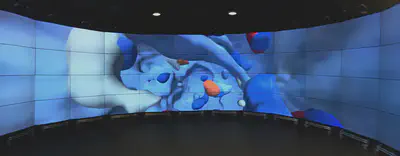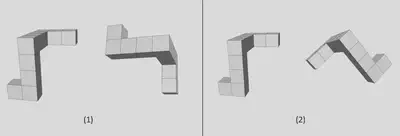Data Visualisation in Large Displays
Overview
This work was part of my master’s project at Imperial College London under the supervision of Dr. David Birch. The primary aim was to integrate a scientific visualisation tool, ParaView, with the Data Observatory (DO) at the Data Science Insititute to foster data exploration. The DO is a large tiled-display system consisting of 64 screens providing a resolution of over 130 megapixels.

Implementation
The main approach was to split the 3D model, displayed in ParaView, across 64 screens over a distributed clustered network. This was achieved by controlling the viewing camera for each screen and ensuring the alignment of the overall scene. Moreover, the MPI protocol was used to distribute the data rendering and processing over multiple machines.
Evaluation
The integration of ParaView with the DO provided a high-resolution visualisation of scientific models and enabled researchers to collaborate with each other. Therefore, the effectiveness of large display environment as compared with small screens was assessed in terms of evaluating the task performance and collaboration.
Task Performance:
A mental rotation task was designed to evaluate the perceptual and cognitive performance of researchers in both environments. It is one of the popular tests that is mainly used to identify the ability to detect orientation change in 3D objects from two perspectives 1. Each participant was asked if the displayed models were the same or mirrored.

Collaboration:
In the collaboration task, the participants were asked to work in pairs and search for hidden objects -represented as coloured arrows- injected inside a 3D brain model while discussing within a limited time.
For both tests, the number of correct responses was measured to conduct quantitative analysis. The results showed a significant advantage of using the DO as compared with the typical desktop monitor in the accuracy of the mental rotation and collaborative search tasks.
R. N. Shepard and J. Metzler, “Mental Rotation of Three-Dimensional Objects,” Science, New Series, 1971. ↩︎